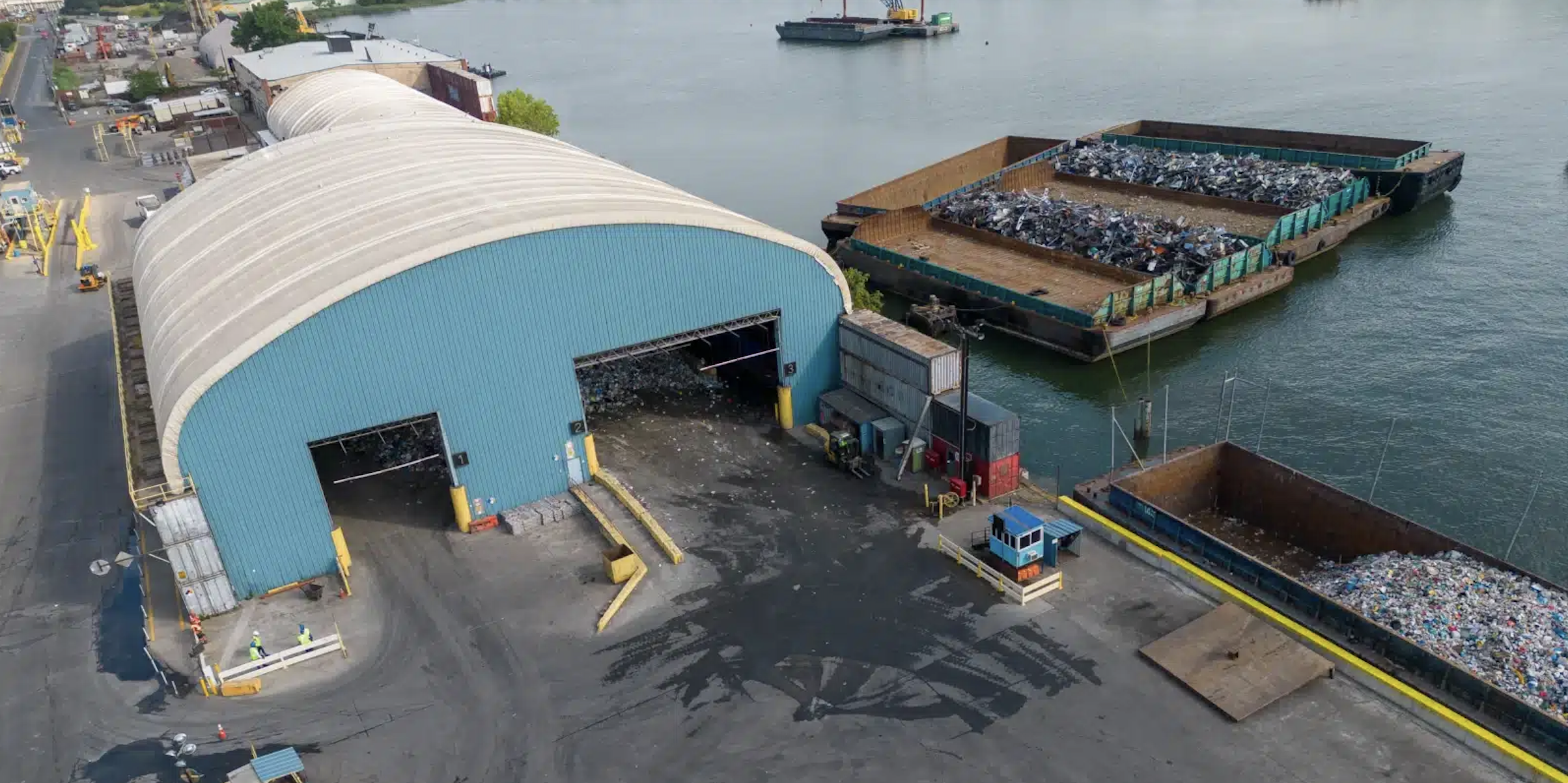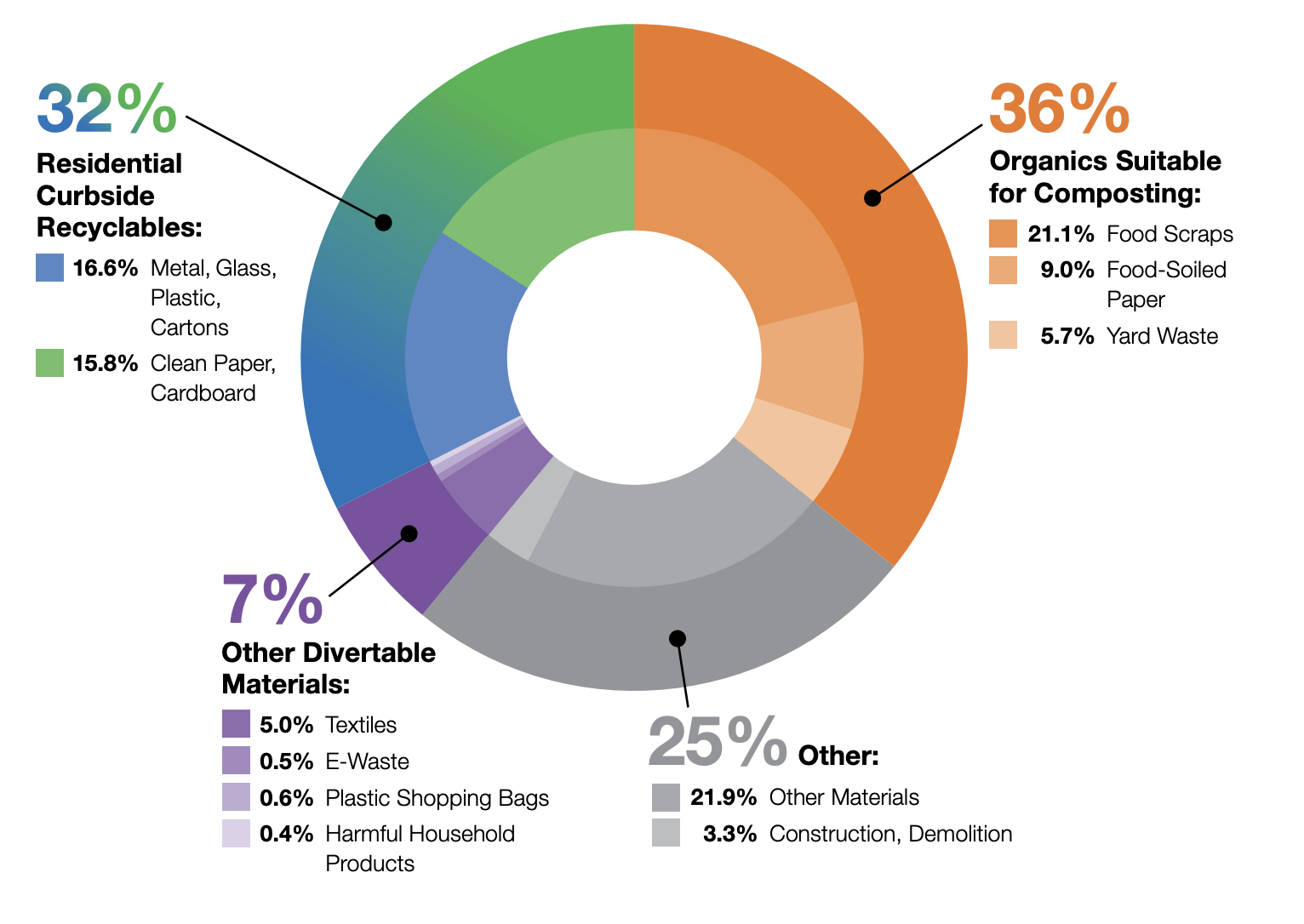
By Scott Etkin
If you’ve ever held an empty container, say, a milk carton, in your hand and had that moment of indecision about whether or not it can be recycled, and then thrown it in the trash, you’re not alone.
32% of what New Yorkers put in the trash are glass, plastic, metal, and paper items that can be recycled, according to the New York City Department of Sanitation’s (DSNY’s) most recent waste characterization study.
To keep recyclables from getting thrown in with the rest of the trash, New York City has a dual-stream recycling system, meaning that metal, glass, and plastic goes in one bin and paper goes in another. This sounds simple enough, but many gray areas can come up for even the most ardent recycler.
Below are several recycling tips shared by a representative of Balcones Recycling*, which operates two massive materials recovery facilities in NYC. But first, a little context on NYC’s recycling system.
UWS recycling by the numbers
As made clear by the bags left on the curb on collection days, New Yorkers produce a lot of recycling. In 2023, Upper West Side residential buildings (from West 59th to 110th streets) had more than 11,000 tons of paper and more than 8,000 tons of metal, glass, and plastic collected by DSNY, according to the city’s Open Data portal. In more relatable terms, that’s roughly 110 pounds of paper and 80 pounds of metal, glass, and plastic per Upper West Sider per year. (A ton equals 2,000 pounds and approximately 200,000 people live on the Upper West Side.)

Recycling is no panacea for our waste problems. In fact, the Environmental Protection Agency ranks it below “reduction and reuse” in its hierarchy of waste management. Still, recycling is considered better than sending items that still have value to landfill or incineration because it allows them to be remade into usable products without creating or extracting new materials.
Once it’s collected, NYC’s metal, glass, and plastic recycling is transported to facilities in Jersey City or Sunset Park, Brooklyn (the UWS’s recycling goes to the one in Jersey City), and its paper goes to a facility on Staten Island. These facilities are a maze of conveyor belts that are fascinating to watch.
Tips for properly recycling common items
- Cartons that hold liquid (like milk, juice, or broth) go in the plastic/glass recycling bin, not paper. (They are coated in plastic and might have a metal layer to keep the product shelf stable.) These types of cartons and boxes are the items that are most frequently placed in the wrong bin, according to the DSNY’s 2017 waste characterization study.
- For lids and caps, if it’s the same material as the bottle or jar it came with, then recycle it with the lid on. If the lid/cap is a different material than its vessel, then recycle it with the lid off.
- It’s good to clean jars of food residue, like peanut butter, but they don’t have to be perfectly clean. Pizza boxes can be recycled, even if they have some grease on them. (Fun fact: NYC’s paper recycling is processed into new products, such as pizza boxes, at Pratt Paper Mill on Staten Island and then returned to the city for use.) Aluminum foil can be recycled even if it has some food residue on it.
- In NYC, black plastic containers – often used for takeout – can be recycled. (This wasn’t always the case because of the challenge of sorting black plastic. But new technology has been implemented in recent years to make this possible.)
- Wire and plastic hangers can be recycled but it’s better to return them to the dry cleaners, since many accept them back for reuse.
- Envelopes that have a small plastic window to see through or paper with staples and tape on it can be recycled in the paper bin. Wet paper and shredded paper can also be recycled.
- Refrigerators and air conditioners can be recycled but cannot go out with the regular recycling because they contain chlorofluorocarbons (CFCs) that must be disposed of separately. For more information on how to schedule these pick-ups, visit this link.
- Only trash should be set out for collection in dark bags. Recycling should be set out in clear bags. (If your building is putting out recycling in dark bags, then it is probably not going to get recycled and this should be corrected.)
Common items that can’t be recycled
About 25% of the material that NYC’s materials recovery facilities receive is trash that cannot be recycled. At the link is a list of what DSNY classifies as trash and here are some common items to watch out for:
- Plastic bags and films (like snack bag pouches and wrappers) cannot be recycled. Plastic bags are especially problematic because they gum up the recycling facility’s converter belts and, once stuck, have to be picked out by hand. TerraCycle, a private company unaffiliated with DSNY, sells boxes that individuals can use to collect their hard-to-recycle items, such as wrappers, and return them by mail to be recycled.
- Mirrors cannot be recycled. (The only glass that can be recycled are bottles and jars, which then are turned into new bottles and jars.)
- Do not put batteries in the normal recycling, since they can cause fires. For more info on how to recycle batteries, visit this link.
- Wood and cans that hold hazardous or flammable materials cannot be recycled.
To find out how to get rid of specific items, you can use the search bar on DSNY’s site at the link, and it provides instructions for a comprehensive list of materials. And if you’d like to recycle old electronics and textiles or have lightly used clothes to donate, the Marlene Meyerson JCC Manhattan is hosting a “Community Recycling Day” on Sunday, April 21st from 10 a.m. to 2 p.m. at 334 Amsterdam Avenue at West 76th Street.
*The presentation was given through a free course aptly called the “Trash Academy,” which is organized by the Sanitation Foundation, the nonprofit partner of NYC’s Department of Sanitation.
Subscribe to West Side Rag’s FREE email newsletter here.









This is super helpful. Thanks!
Great combo of stats, big picture visuals and “hold in your hand and decide” details! So appreciated.
Thank you. I have been overlooking one or two items for recycling and no longer will do so!
Is there any information on how well we do in recycling plastics? It seems that nationally, only 5 to 10 % of the plastics submitted actually do get recycled. Anyone know how NYC compares?
I also found this very helpful. Some of it is totally new information, some is stuff I once knew but have forgotten. I’m trying to figure out how I can copy and print the article so I can post it on my wall.
Thank you Scott. Excellent info.
Very helpful, thanks!